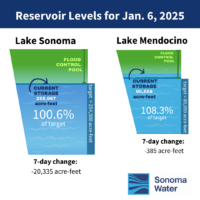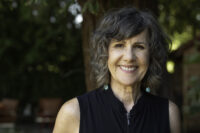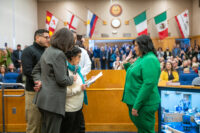At the Sonoma City Council meeting on December 19, issues of energy efficiency, transportation, and water came up again and again, showing that the subject of conservation and emissions reduction is being taken seriously by all levels of government. The overall question emphatically seems to be not whether to do something, but what, and how.
Personal responsibility was a recurring theme. One speaker told the council that while he was discouraged by our government’s lack of leadership, he found he and his family could make a difference right in their own home. He surveyed his family’s energy usage and cut back to practically nothing. “We can take on the responsibility to reduce our use to nothing,” he said.
We have to get out of our cars
Council member Stanley Cohen noted that in order to be successful in meeting the countywide emissions reduction objective of 2015, “We have to get out of our cars,” he said. “We have to address this as a community. It’s going to take all of us if we’re going to make a dent in this.”
Or get into a hybrid
Demonstrating its commitment to lowering Sonoma’s emissions “footprint,” the council voted to purchase a Toyota Highlander hybrid for the daily and emergency use of Fire Chief Phil Garcia. The vehicle uses nearly half the gas of the current vehicle, boasting an average 30 miles per gallon.
Some council members questioned whether the vehicle could bear up to rough terrain, and there was some discussion of re-building the engine in the old one for driving off-road, and getting a fuel-efficient “around town” car, but Mayor Joanne Sanders, herself a Toyota driver, vouched for the Highlander, and said it would not make sense to have a gas guzzler for rough terrain and a fuel-efficient car for every day driving. When there’s an emergency, she said, the fire chief doesn’t have time to figure out which to drive and where it is.
Safety vs. cost: either way, commuters will pay
Of interest to Sonoma commuters, Sanders brought up the proposal to rebuild Doyle Drive, the ageing and unsafe 1.2 mile ramp which connects the Golden Gate Bridge to San Francisco. The new construction would cost in the neighborhood of $1 billion, which will come from a complicated combination of state and federal money, with various conditions attached, and with the shortfall supplied directly from commuters’ pockets.
The proposal would provide safety and aesthetic benefits, but, according to Sanders, will offer no congestion relief save a possible indirect reduction of congestion resulting from the elimination of those commuters who could not afford the new toll—a method of congestion relief she said does not work. So far, the Golden Gate Bridge District Board, loath to add to Marin and Sonoma commuters’ already heavy burden, has put off a decision on whether to support the plan.
The issue will be taken up again at the next meeting, on January 11. Sanders, a board-member, said that she welcomes input from the public before that time.
Water and growth a
delicate balance
Some speakers expressed concern about the cost of water and the lack of balance between what residents are charged for usage and for service fees, noting that over the past year, the service fee has more than doubled. Another speaker said he felt he was being nickeled and dimed to death. Another said that when he conserves, and then his rates go up, it feels as if the incentive is in the wrong direction. At the end of the discussion, in which council members voted unanimously for a period of water rate increase, council member Cohen noted, “It’s not the cost of water; it’s the cost of bringing it to you.”
The Growth Management Ordinance
The discussion of growth centered around balance and foresight. One speaker questioned whether reducing the growth won’t limit workforce housing, causing support personnel to have to commute into town to work. Wouldn’t this act in contradiction to the city’s effort to reduce greenhouse gasses?
Vice Mayor Brown spoke enthusiastically in favor. “I’ve waited a long time for this,” he said, “it’s been a campaign promise of mine. I am completely supportive of reducing the GMO. My concerns are water, sewer and traffic. Others expressed concerns. Council member August Sebastiani noted that limiting new housing increases the value of existing homes, “so I feel the widening gap.” Nevertheless, he said he was in favor of the move. Council member Cohen said, “I say, leave it alone.” Mayor Sanders said, “I’ve never been a fan of GMO, once you get in here and roll your sleeves up and know how things operate, [you realize] it’s all in the zoning.” Despite reservations, she too supported it. Council member Steve Barbose said, “I’m very concerned members of this council are panicking over water. I think there are ways to go to allow us to continue to build. We only can put on 1,500 units and we’re built up. People need to come to these meetings. People need to understand these issues.” The motion carried 4-1.




